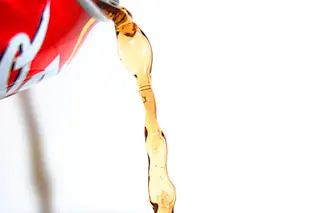Photo: flickr/VinnlDespite what Professor Snape would have you believe, bezoars--which are basically clumps of indigestible matter that are too large to pass out of the stomach-- are not restricted to goats. In fact, they are not uncommon in people, where they are most often composed of pumpkin seed hulls, persimmon skins, and chewing gum. This paper describes a rather common way to dissolve a phytobezoar (a bezoar made up of plant material, like pumpkin seed hulls): filling up the stomach with obscene amounts (3 liters!) of Coca-Cola. Apparently, this breaks up the solid clumps enough that they can pass out of the stomach. Beware, the images after the jump are a little intense!How good is cola for dissolution of gastric phytobezoars? "AIM: To evaluate the efficacy of cola treatment for gastric phytobezoars, including diospyrobezoars. METHODS: A total of 17 patients (range: 48 to 78 years) with symptomatic gastric phytobezoars treated ...
Friday Flashback: How good is cola for dissolving bezoars?
Explore effective gastric phytobezoars treatment using cola! Discover its success rate in dissolving these stubborn clumps.
More on Discover
Stay Curious
SubscribeTo The Magazine
Save up to 40% off the cover price when you subscribe to Discover magazine.
Subscribe













